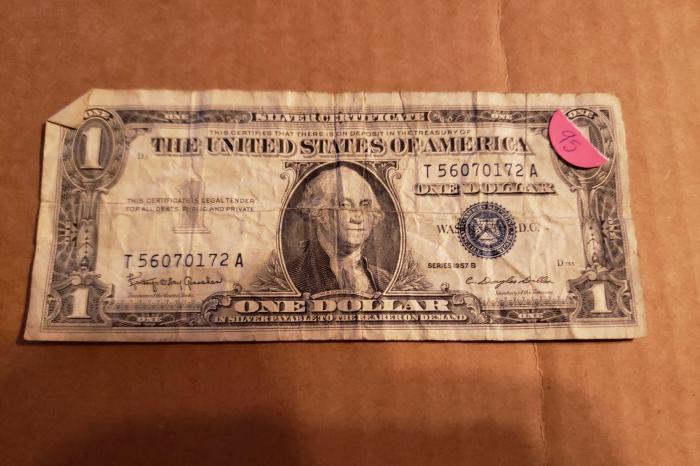Silver certificates are a fascinating part of American currency history. They were issued as a form of paper money that could be redeemed for silver coins or bullion. The 1957 B series of silver certificates are particularly notable among collectors and investors. These certificates were part of a larger series that was introduced to replace older forms of paper currency that were no longer practical. Understanding the value of a 1957 B silver certificate dollar involves looking at several key factors including rarity, condition, and market demand.
The 1957 B Series
The 1957 B silver certificates were part of a series issued by the U.S. Treasury. This series was significant because it marked the last issue of silver certificates before the U.S. government discontinued their use in favor of other forms of currency. The “B” in the series denotes the letter prefix used on the certificates, which helps identify their issue.
These certificates feature a distinctive design with a portrait of George Washington on the obverse and an image of the Great Seal of the United States on the reverse. The 1957 B series is particularly collectible because it represents a transition period in U.S. currency history.
Factors Influencing Value
Several factors influence the value of a 1957 B silver certificate dollar:
1.Condition and Grading The condition of the certificate is perhaps the most crucial factor in determining its value. Coins and paper money are graded based on their appearance, and this grading can significantly impact their market price. The grading scale for paper money ranges from “Very Fine” (VF) to “Uncirculated” (UNC), with each grade representing the degree of wear and tear on the note.
Uncirculated (UNC): These notes are in pristine condition with no signs of wear. They are the most valuable among collectors.
Extremely Fine (EF): Slightly worn but still in excellent condition.
Very Fine (VF): Noticeable wear and creases but still well-preserved.
Fine (F): More significant wear and possibly some tears or stains.
2.Rarity and Demand The rarity of the certificate can greatly affect its value. The 1957 B silver certificate is not extremely rare compared to earlier series, but its value can increase depending on how many high-quality examples are available on the market. Collectors often seek out certificates with low serial numbers or unique printing errors, which can drive up their value.
Demand among collectors also plays a crucial role. As interest in collecting silver certificates fluctuates, so does the value of these notes. The popularity of the 1957 B series among collectors can influence how much buyers are willing to pay.
3.Serial Numbers and Errors Unique serial numbers or printing errors can significantly increase the value of a 1957 B silver certificate. For example, certificates with star notes (which are replacement notes issued when errors occur during printing) or those with low serial numbers are often more sought after. These anomalies are rare and can make a particular certificate much more valuable.
Market Trends and Historical Context
The value of a 1957 B silver certificate dollar has fluctuated over time based on market trends and collector interest. Historically, these certificates were issued in large quantities, making them relatively common. However, as interest in collecting silver certificates grows, so does the value of well-preserved examples.
The historical context of these certificates also contributes to their appeal. As the last series of silver certificates issued before the U.S. government shifted to other forms of currency, they represent a significant moment in American financial history. This historical importance can enhance their value among collectors and investors.
Estimating Value
To estimate the value of a 1957 B silver certificate dollar, one should consider the following:
Consulting Price Guides: Price guides and catalogs specific to paper currency can provide a baseline for the value of a 1957 B silver certificate. These guides offer insights into current market values based on recent sales and auctions.
Professional Appraisal: For those seeking an accurate valuation, a professional appraisal from a reputable currency dealer or appraiser is recommended. Professionals can assess the certificate’s condition, rarity, and market demand to provide a precise value.
Auction Results: Reviewing recent auction results can also give an indication of current market values. Auction houses often provide detailed descriptions and final sale prices of similar certificates, offering valuable insights into their worth.
See also: How Much Is a James Garfield Gold Dollar Worth
Conclusion
The value of a 1957 B silver certificate dollar is influenced by several key factors, including its condition, rarity, demand, and historical context. While these certificates are not as rare as earlier series, they remain valuable to collectors due to their historical significance and the interest in silver certificates. By considering these factors and consulting with experts, collectors and investors can gain a better understanding of the worth of their 1957 B silver certificates.

